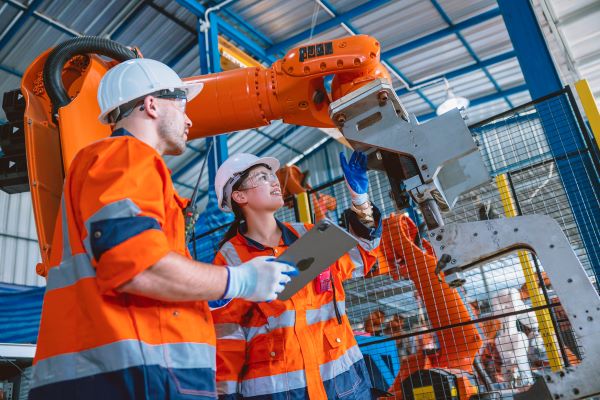A senior exec at a large U.S. manufacturer recently told me about plans to put their entire workforce into AR glasses. The hype around AR, VR, and mixed-reality tech has been building in the manufacturing industry for years. So from one perspective, it wasn't altogether surprising. But while the transition may be inevitable in time, I have to wonder: are we there yet?
The claims are big
According to a study by PWC, VR learners trained up to four times faster, felt more confident to apply the skills they’d learned and were more focused than their peers.
Lockheed Martin says AR glasses allowed engineers to work three times faster and with high accuracy when assembling and repairing F-35 fighter jets.
I agree on this point: AR and VR tech has major potential to revolutionize and enhance key processes in the manufacturing environment, including assembly and MRO. That is, if it works as advertised.
But it doesn't - not yet
The tech is relatively new, and implementing an AR or VR solution that is advanced enough to be effective is an extremely costly investment. So costly, in fact, that it’s simply not financially viable for most manufacturing operations in the U.S. right now.
Part of the problem, of course, is that these solutions often require mass deployment of new wearable hardware.
The promise of future transformation can bring with it a dangerous tendency to inaction. While manufacturers wait for AR and VR maturity to improve and cost to decrease, they stick with their paper work instructions, PDF product content and PowerPoint training materials, needlessly enduring the painful shortcomings and downstream impacts of this kind of content.
It's what we might call a perfectionist's paradox: If they can’t take an upgrade all the way, it’s best to hang on and do nothing. This kind of paralysis comes at a cost. Manufacturers could miss out on the economic and operational gains afforded by more achievable steps, and more market-ready technology.
There’s another aspect of AR and VR that I feel needs to be carefully considered before it's rolled out en masse, which is how the technology will affect the human beings using it. What impact will this have on the way we work together going forward? Will it make people feel more connected, or more isolated, or both? How will this influence morale, and company culture? What are the psychological ramifications? I don’t know the answers, but I think it warrants some careful thought.
The reality is, there’s a solution available now that delivers almost everything AR and VR tech promises, at a fraction of the cost. A shift to interactive digital work instructions delivers increased profitability, fewer errors, increased quality yields, better operational efficiencies, more efficient training processes, increased employee retention and greater synergy throughout an organization. This technology doesn’t require new hardware, new training, doesn't isolate the worker into their own universe, and it works right now.
We’ve got to be pragmatic. A full AR or VR operational environment is simply not practical right now. But that doesn't mean valuable change is not accessible.
Or am I missing something?



